
The 1st Cavalry Division was a regular Division of the British Army during the First World War where it fought on the Western Front. During the Second World War it was a first line formation, formed from Yeomanry Regiments. It fought in the Middle East before being converted to the 10th Armoured Division.

The 10th Armoured Division was an armoured formation of division-size of the British Army, raised during the Second World War and was active from 1941–1944 and after the war from 1956–1957. It was formed from the 1st Cavalry Division, a 1st Line Yeomanry unit of the Territorial Army (TA) which had previously been serving in Palestine. The division was converted from cavalry to armour and redesignated from 1 August 1941.
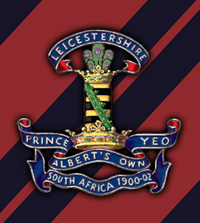
The Leicestershire Yeomanry (Prince Albert's Own) was a yeomanry regiment of the British Army, first raised in 1794 and again in 1803, which provided cavalry and mounted infantry in the Second Boer War and the First World War and provided two field artillery regiments of the Royal Artillery in the Second World War, before being amalgamated with the Derbyshire Yeomanry to form the Leicestershire and Derbyshire (Prince Albert's Own) Yeomanry in 1957. The regiment's lineage is currently perpetuated by E (Leicestershire and Derbyshire Yeomanry) Squadron of the Royal Yeomanry.

The 3rd County of London Yeomanry (Sharpshooters) was a Yeomanry regiment of the British Army. It was raised in 1901 from Second Boer War veterans of the Imperial Yeomanry. During the First World War it served dismounted at Gallipoli, was remounted to serve in Macedonia, Egypt and Palestine, before being converted to machine gunners for service on the Western Front. 2nd and 3rd Line units remained in the United Kingdom throughout.
The 4th Cavalry Brigade was a cavalry brigade of the British Army. It served in the Napoleonic Wars, in the First World War on the Western Front where it was initially assigned to The Cavalry Division before spending most of the war with the 2nd Cavalry Division, and with the 1st Cavalry Division during the Second World War.
The 5th Cavalry Brigade was a cavalry brigade of the British Army. It served in the Napoleonic Wars, in the First World War on the Western Front where it was initially independent before being assigned to the 2nd Cavalry Division, and with the 1st Cavalry Division during the Second World War.
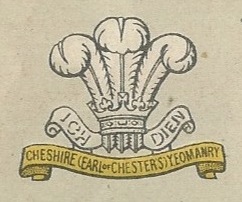
The Cheshire Yeomanry was a yeomanry regiment that can trace its history back to 1797 when Sir John Leicester of Tabley raised a county regiment of light cavalry in response to the growing fears of invasion from Napoleonic France. Its lineage is maintained by C Squadron, the Queen's Own Yeomanry.
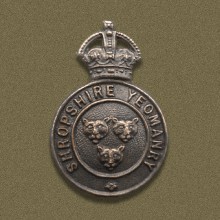
The Shropshire Yeomanry was a yeomanry regiment of the British Army, first raised in 1795, which served as a cavalry and dismounted infantry regiment in the First World War and as a cavalry and an artillery regiment in the Second World War. It was then amalgamated with the Shropshire Royal Horse Artillery.

The North Somerset Yeomanry was a part-time cavalry regiment of the British Army from 1798 to 1967. It maintained order in Somerset in the days before organised police forces, and supplied volunteers to fight in the Second Boer War. It served on the Western Front in the First World War. At the outbreak of the Second World War, it continued to operate in the mounted role and then as a specialist signals unit. Postwar it joined the Royal Armoured Corps and later became infantry. Its lineage today is maintained by 93 Squadron 39 (Skinners) Signal Regiment.

The 2nd Cavalry Division was a division of the regular British Army that saw service in the Peninsular War and in World War I, when it also known as Gough's Command, after its commanding general. It was part of the British Expeditionary Force that served in France in from 1914 to 1918. It was involved in most of the major actions where cavalry were used as a mounted mobile force, and also many where the troops were dismounted and effectively served as infantry.

The 3rd Cavalry Division was a division of the British Army in the First World War. It was formed at Ludgershall, Wiltshire England in September 1914 under the command of Major-General the Hon. Julian Byng. The division moved to Belgium in the first week of October 1914, landing at Ostend, although its third Brigade was only formed there once. During the war the division took part in most of the major actions where cavalry were used as a mounted mobile force, and also many where the troops were dismounted and effectively served as infantry.
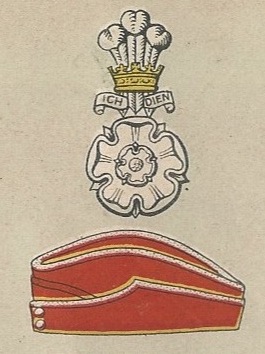
The Yorkshire Hussars was an auxiliary unit of the British Army formed in 1794. The regiment was formed as volunteer cavalry (Yeomanry) in 1794 during the French Revolutionary Wars and served in the Second Boer War and the First World War. It was converted to an armoured role during the Second World War. In 1956, it merged with two other Yorkshire yeomanry regiments to form the Queen's Own Yorkshire Yeomanry. Its lineage is continued today by the Queen's Own Yeomanry.

The Queen's Own Yorkshire Dragoons was a yeomanry regiment of the British Army in existence from 1794 to 1956. It was formed as a volunteer cavalry force in 1794 during the French Revolutionary Wars. Its volunteer companies played an active role with the Imperial Yeomanry in the Second Boer War, but opportunities for mounted action were much more restricted during the First World War and it was temporarily converted into a cycle unit. It remained a cavalry regiment throughout the interwar years, and was the last horsed unit of the British Army to see action, in the Syria–Lebanon Campaign of 1941, finally mechanising the following year. It served as motorised infantry in the North African and Italian campaigns of the Second World War. In 1956, it merged with the Yorkshire Hussars and the East Riding of Yorkshire Yeomanry to form the Queen's Own Yorkshire Yeomanry. Its lineage is continued today by A Squadron, the Queen's Own Yeomanry.
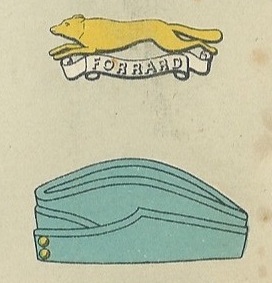
The East Riding of Yorkshire Yeomanry was a unit of the British Army formed in 1902. Units of Yeomanry Cavalry were raised in the East Riding of Yorkshire in the 18th and early 19th centuries at times of national emergency: the Jacobite Rising of 1745, the French Revolutionary Wars and the Napoleonic Wars. These were stood down once each emergency was over. The East Riding of Yorkshire Yeomanry, was established in 1902, and this saw action during the First World War both in the mounted role and as machine gunners.
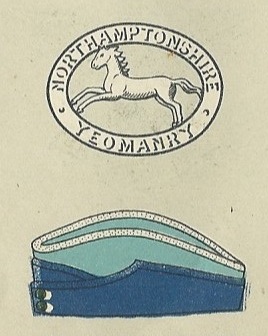
The Northamptonshire Yeomanry was a Yeomanry regiment of the British Army, formed in 1794 as volunteer cavalry. It served in the Second Boer War, the First World War and the Second World War before being reduced to squadron level in 1956. It ceased to have a separate existence in 1971.
The 3rd Cavalry Brigade was a cavalry brigade of the British Army. It served in the Napoleonic Wars, in the Boer War, and in the First World War on the Western Front where it was initially assigned to The Cavalry Division before spending most of the war with the 2nd Cavalry Division.
The 1st Cavalry Brigade was a brigade of the British Army. It served in the Napoleonic Wars, the Anglo-Egyptian War, the Boer War and in the First World War when it was assigned to the 1st Cavalry Division.

The 2nd Cavalry Brigade was a brigade of the British Army. It served in the Napoleonic Wars, the Boer War and in the First World War when it was assigned to the 1st Cavalry Division.
The 7th Cavalry Brigade was a cavalry brigade of the British Army. It served in the Napoleonic Wars, notably at the Battle of Waterloo. It was reformed in 1914 and served on the Western Front as part of the 3rd Cavalry Division until the end of World War I.
The 8th Cavalry Brigade was a cavalry brigade of the British Army in World War I. It was formed in Belgium in 1914 and served on the Western Front as part of the 3rd Cavalry Division. It left the 3rd Cavalry Division on 14 March 1918.













